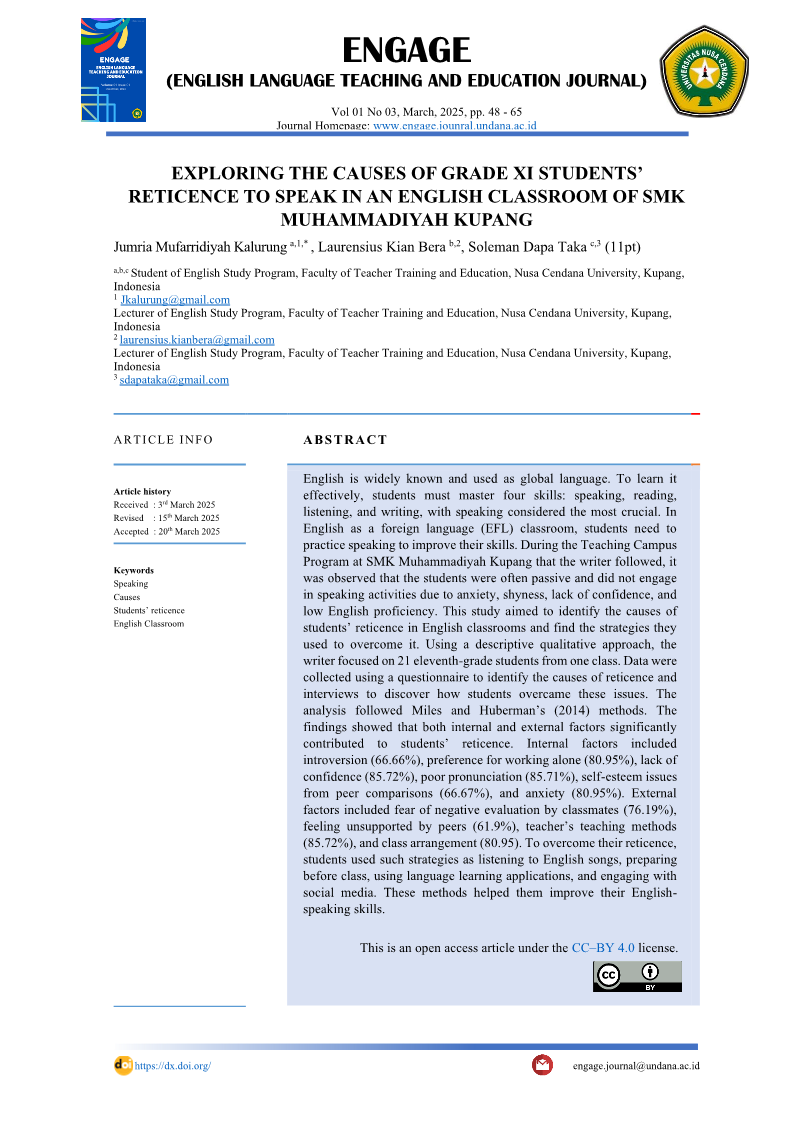EXPLORING THE CAUSES OF GRADE XI STUDENTS’ RETICENCE TO SPEAK IN AN ENGLISH CLASSROOM OF SMK MUHAMMADIYAH KUPANG
Keywords:
Speaking, Causes, Students’ reticence, English ClassroomAbstract
English is widely known and used as global language. To learn it effectively, students must master four skills: speaking, reading, listening, and writing, with speaking considered the most crucial. In English as a foreign language (EFL) classroom, students need to practice speaking to improve their skills. During the Teaching Campus Program at SMK Muhammadiyah Kupang that the writer followed, it was observed that the students were often passive and did not engage in speaking activities due to anxiety, shyness, lack of confidence, and low English proficiency. This study aimed to identify the causes of students’ reticence in English classrooms and find the strategies they used to overcome it. Using a descriptive qualitative approach, the writer focused on 21 eleventh-grade students from one class. Data were collected using a questionnaire to identify the causes of reticence and interviews to discover how students overcame these issues. The analysis followed Miles and Huberman’s (2014) methods. The findings showed that both internal and external factors significantly contributed to students’ reticence. Internal factors included introversion (66.66%), preference for working alone (80.95%), lack of confidence (85.72%), poor pronunciation (85.71%), self-esteem issues from peer comparisons (66.67%), and anxiety (80.95%). External factors included fear of negative evaluation by classmates (76.19%), feeling unsupported by peers (61.9%), teacher’s teaching methods (85.72%), and class arrangement (80.95). To overcome their reticence, students used such strategies as listening to English songs, preparing before class, using language learning applications, and engaging with social media. These methods helped them improve their English-speaking skills.
Downloads

Downloads
Published
Issue
Section
License
Copyright (c) 2025 ENGLISH LANGUAGE TEACHING AND EDUCATION JOURNAL

This work is licensed under a Creative Commons Attribution-NonCommercial-ShareAlike 4.0 International License.






